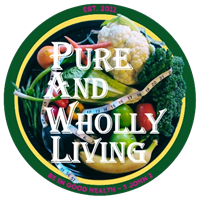Sure, pumpkins can seem spooky in their Jack-o-lantern state, but don’t be fooled— they’re actually one of the most nutritious fruits out there. Loaded with antioxidants and disease-fighting vitamins, these gourds aren’t just for carving, making them a bonafide superfood.
Pump Up the Pumpkin — Why They’re Super
Pumpkins’ bright orange color may make them a good substitute for traffic cones, but the real power behind their hue is beta-carotene, a provitamin that is converted to vitamin A in the body. Known for its immune-boosting powers, beta-carotene is essential for eye health and has also been linked to preventing coronary heart disease. But there’s no need to choose fresh to get the benefits of pumpkin. One cup of canned pumpkin has seven grams of fiber and three grams of protein— even more than the fresh stuff— and contains only 80 calories and one gram of fat. Plus, canned pumpkin is packed with vitamins and provides over 50 percent of the daily value of vitamin K, which may reduce the risk for some types of cancer.
Still, the real treasure is in the seeds. One ounce (about 140 seeds) is packed with protein, magnesium, potassium, and zinc. Studies suggest pumpkin seeds provide a number of health benefits— such as blocking the enlargement of the prostate gland, lowering the risk of bladder stones, and helping to prevent depression. Plus, they contain high levels of phytosterols, which research suggests can reduce cholesterol and even help prevent some types of cancers. So get scooping!
Get Like Peter — Your Action Plan
Peter, Peter Pumpkin Eater, that is. There are plenty of ways to sneak pumpkin into any meal — whether it’s the seeds or the guts, canned, cooked, or raw, or in a main dish versus a chocolate chip cookie. Canned pumpkin can be added to almost anything and (voila!) out comes the perfect autumn treat. For a hot breakfast filled with fiber, try adding canned pumpkin to oatmeal. And take note: if a recipe calls for canned pumpkin, don’t be afraid to replace it with fresh.
And save those seeds— they’re easy to roast. After removing seeds from the pumpkin’s inner cavity, wipe them off with a paper towel. Place in a single layer on a cookie sheet, sprinkle with some seasoning, and lightly roast at 160-170 degrees for 15 to 20 minutes. Roasting for a short time at a low temperature helps to preserve their healthy oils. While there’s no such thing as too much pumpkin, eating a lot can actually give skin a “pumpkin-like glow.” Too much beta-carotene isn’t toxic, but excessive consumption can cause a yellowish discoloration of the skin called carotenemia. Don’t worry, though— turning into a pumpkin after midnight is still only for the fairy tales— the skin discoloration is harmless and can be easily reversed.
Source: Huffington Post, adapted
Check out this Superfood Recipe: Pumpkin Pie Parfait
